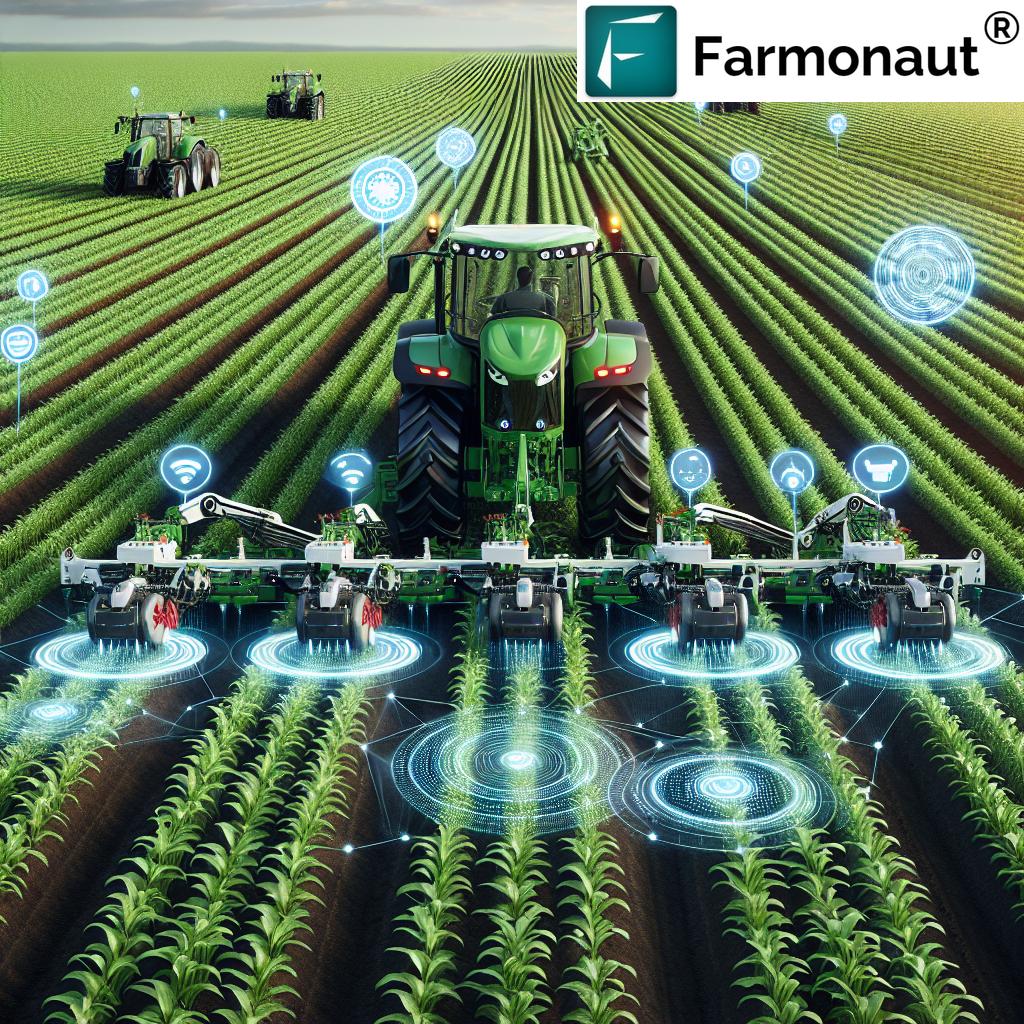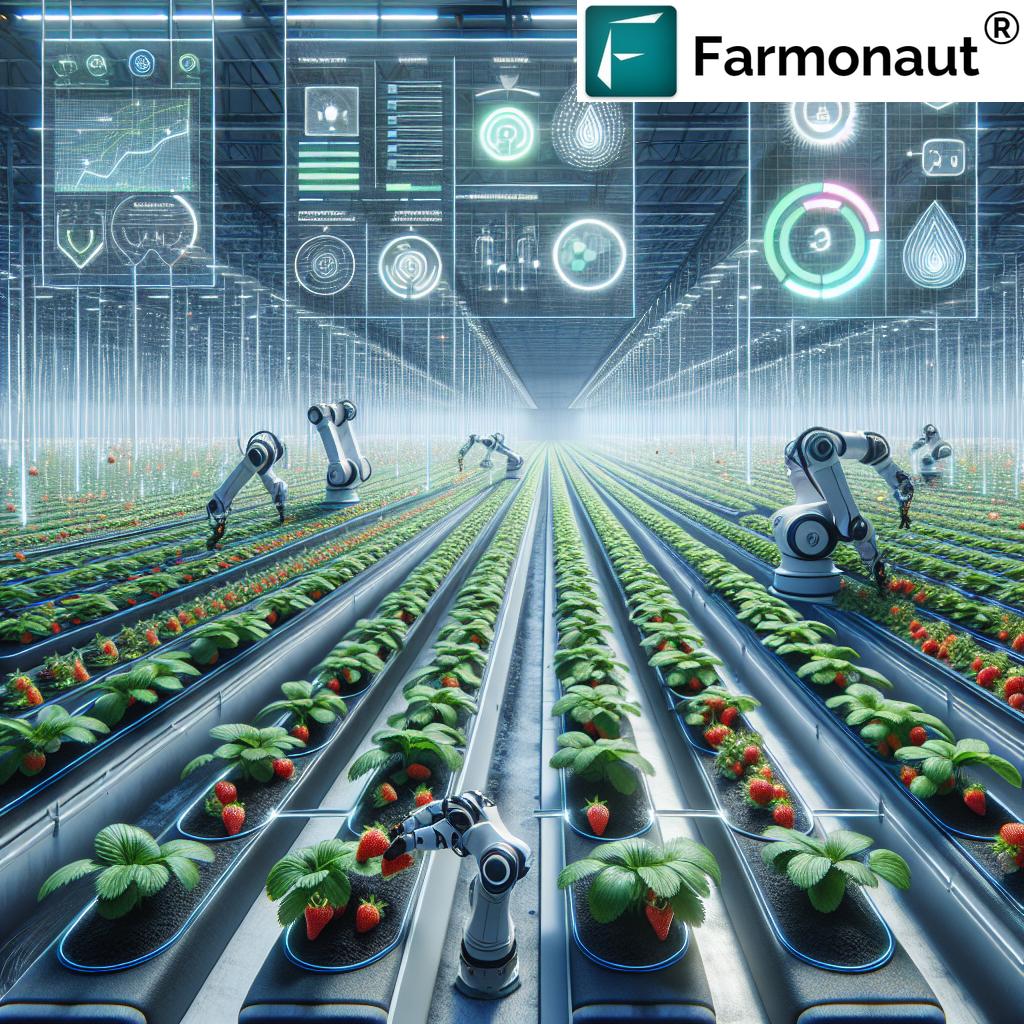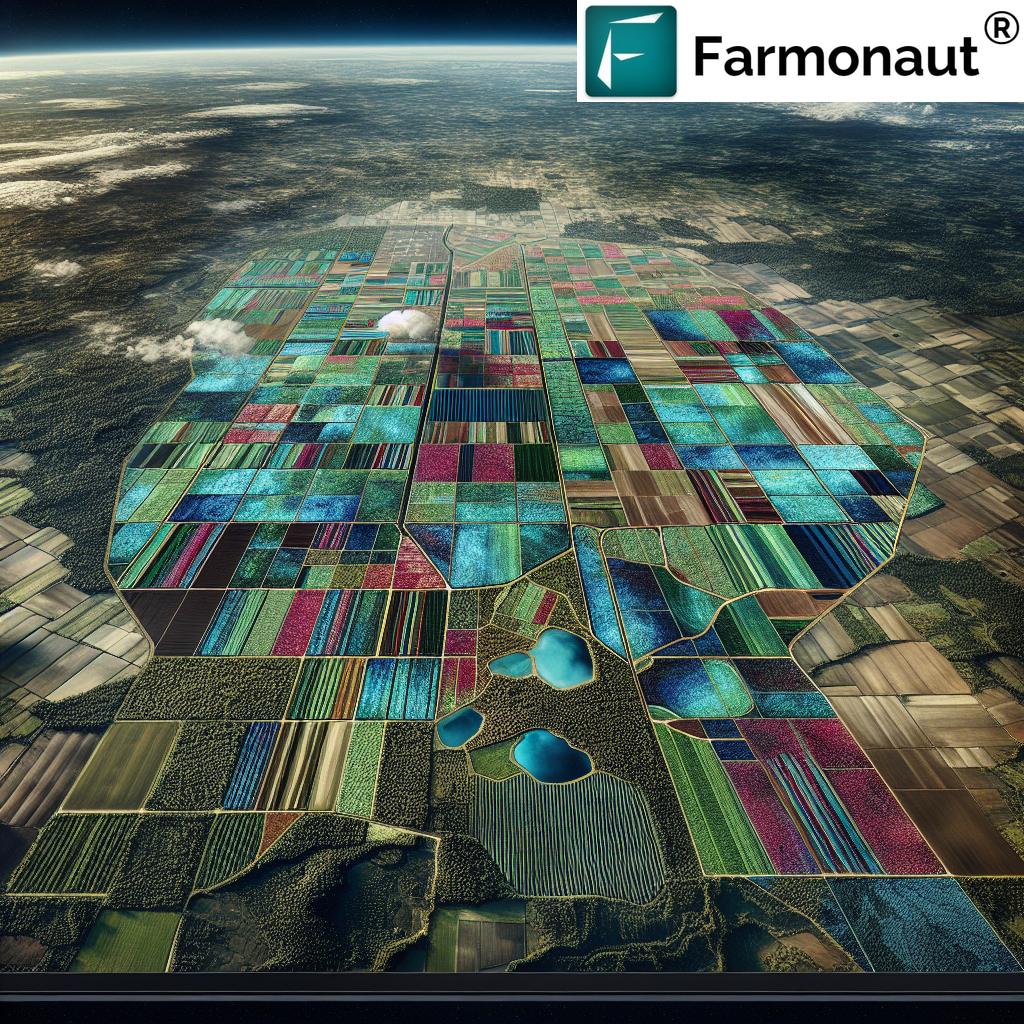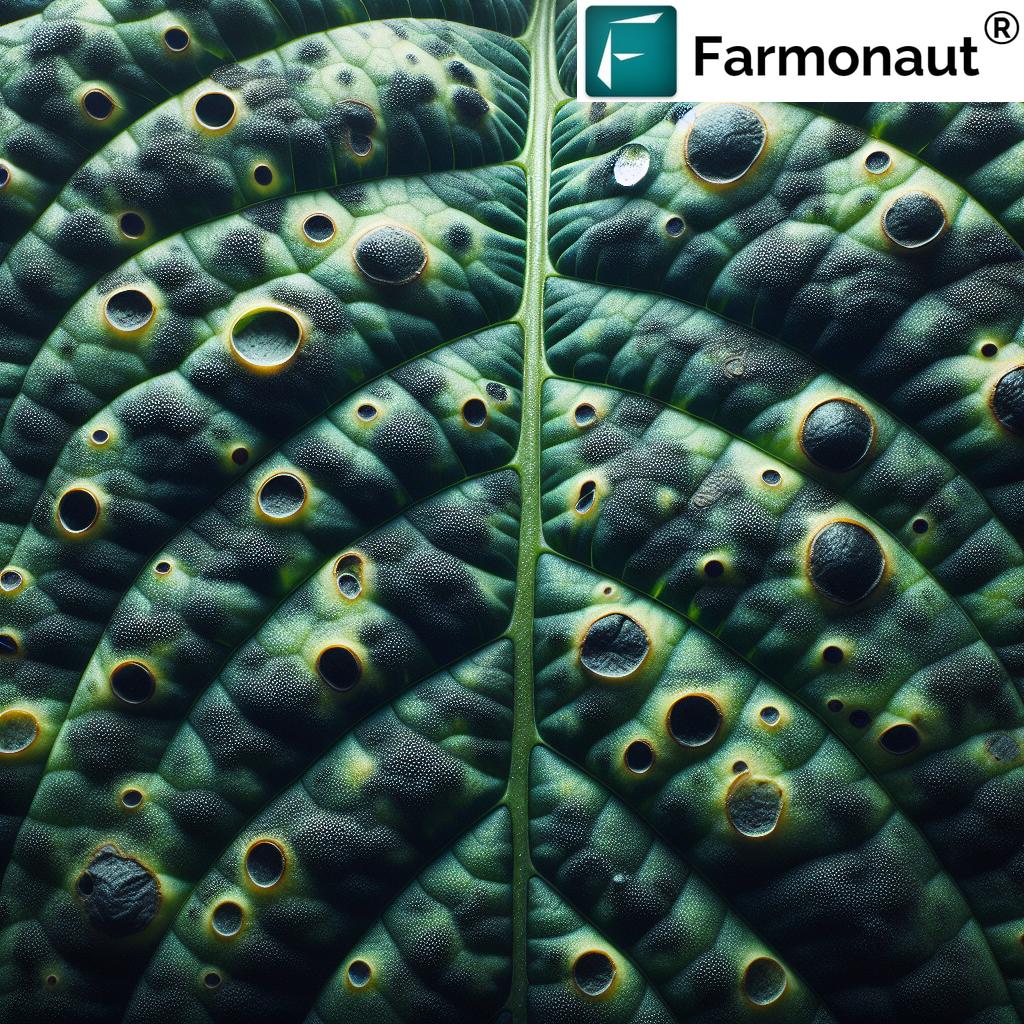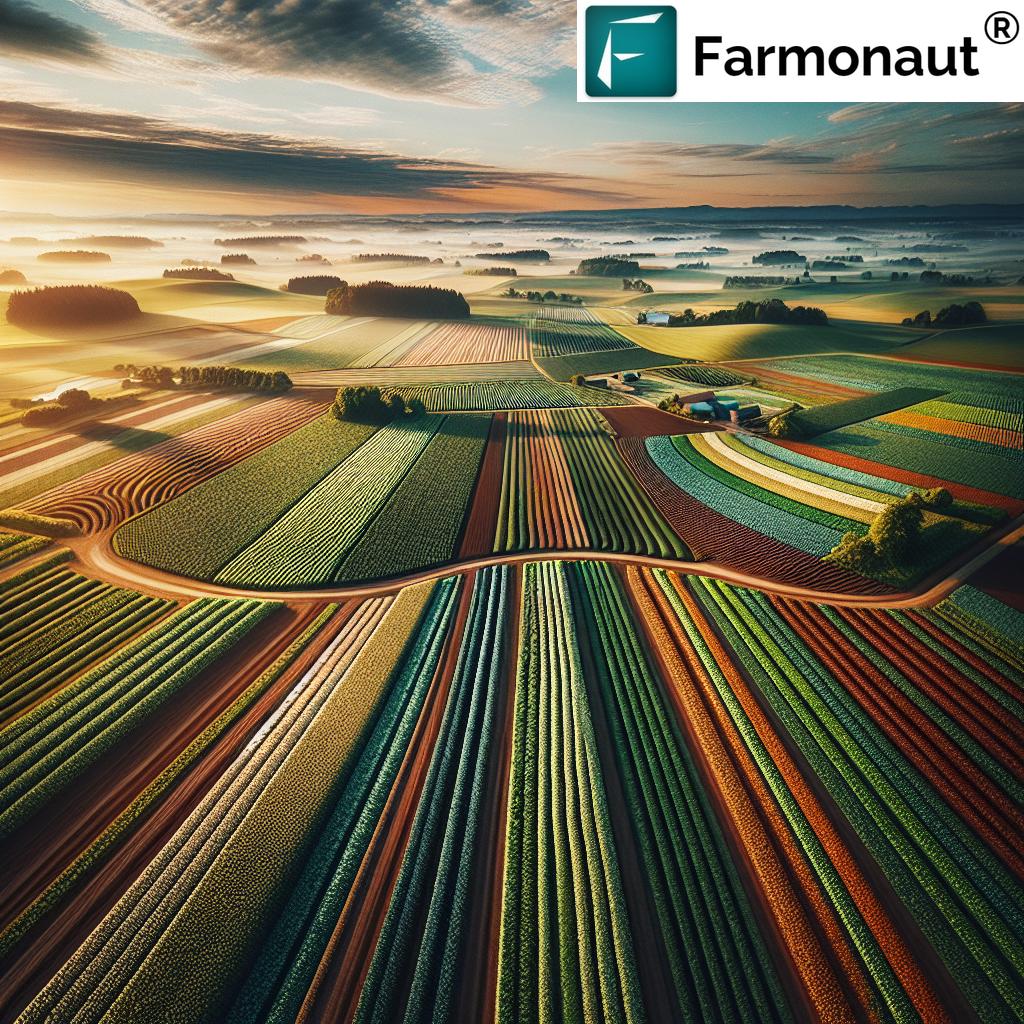Autonomous Farming: 7 Tech Secrets Changing Agriculture
“AI-powered systems can increase crop yields by up to 30% through precision agriculture techniques.”
Introduction to Autonomous Farming
As we step further into the 21st century, the world of agriculture is experiencing a seismic shift. The rise of autonomous farming—sometimes called smart farming or precision agriculture—is made possible by the convergence of breakthroughs in artificial intelligence (AI), robotics, the Internet of Things (IoT), and cutting-edge data management systems. We now find ourselves at the intersection of efficiency, sustainability, and innovation.
But what is autonomous farming? It’s a new approach that leverages a suite of advanced technologies to automate various processes on the farm—from planting and irrigation to monitoring crop health and resource management. Instead of relying solely on manual labor, we’re witnessing a transformation where machines and algorithms do the heavy lifting, allowing for continuous, optimized, and data-driven operations.
Whether you’re a forward-thinking farmer, an agricultural innovator, a policymaker, or simply curious about the future of farming, understanding autonomous technologies is more important than ever. Let’s explore seven cutting-edge secrets catalyzing this agricultural revolution—and see how Farmonaut is making precision agriculture accessible and affordable for everyone.
7 Tech Secrets Revolutionizing Agriculture
Let’s break down the seven technology secrets that are making autonomous farming a reality. Each leverages the latest in AI, robotics, connectivity, and data analysis to enhance efficiency, boost sustainability, and redefine agricultural practices as we know them.
1. Autonomous Tractors and Harvesters
- What They Are: Self-driving tractors and harvesters programmed to perform tasks such as plowing, planting, spraying, and harvesting with minimal (or no) human intervention.
- Key Features: Integration of GPS technology, AI algorithms, multilayered sensors to navigate fields and avoid obstacles.
- Benefits: Reduces the need for manual labor, increases precision, and ensures 24/7 operations—even in varying weather and field conditions.
For instance, modern autonomous tractors can precisely follow GPS-guided routes, adjust for soil variances, and coordinate seamlessly with other autonomous machinery. These systems are already seeing implementation in large-scale operations, substantially reducing overhead and improving consistency.
Learn more about automation-driven farm machinery here.
“Autonomous tractors can reduce labor costs in farming operations by as much as 60%.”
2. Robotic Harvesters
- Role: Robots equipped with computer vision and advanced sensors identify, pick, and sort ripe fruits with precision.
- Use Cases: Most common in high-value, labor-intensive crops like strawberries, tomatoes, and apples.
- Outcome: Minimizes harvest losses, maintains fruit quality, and addresses critical labor shortages in the field.
Robotic harvesters use a blend of image recognition and mechanical arms to gently pluck produce at peak ripeness, drastically reducing human error and time investment.
Discover more on robotic harvesters and AI’s future in agriculture.
3. Drones for Crop Monitoring
- Function: Drones fly over fields capturing high-resolution images for real-time crop health assessment.
- Capabilities: Detect pest infestations, disease outbreaks, and nutrient deficiencies earlier and more accurately than ground inspections.
- Impact: Enables targeted interventions—reducing pesticide usage and supporting sustainable farming practices.
Drones work hand-in-hand with AI systems that analyze images and sensor data, transforming complex visuals into actionable recommendations for farmers. This dramatically improves decision making and crop yield optimization.
4. Smart Irrigation Systems
- What They Do: AI-powered irrigation technology analyzes weather forecasts, soil moisture, and crop data to optimize watering schedules.
- Advantages: Reduces water usage, minimizes operational costs, and ensures crops receive precise hydration at every growth stage.
- Sustainability: Diminishes environmental impact by conserving water and reducing runoff.
Smart irrigation systems represent a leap in resource management and sustainability. These solutions “listen” to the weather, soil, and crops themselves, applying water only when necessary and precisely where it’s needed. This leads to consistent yields and incredible water savings.
Explore smart irrigation innovations here.
5. AI and IoT-Based Crop Health Monitoring
- Essence: AI-driven systems utilize satellite imagery, on-field IoT sensors, and machine learning to monitor crop condition, soil health, and climate patterns.
- Features: Pinpointed identification of stressed plants, early disease signs, and irrigation needs—sometimes at a single-plant level.
- Value: Real-time data enables immediate interventions, increasing yields and reducing waste.
Platforms like Farmonaut use AI algorithms to turn mass satellite and sensor data into simple, easy-to-understand insights for all sizes of farms. From carbon footprinting and emission tracking to performance analytics, these systems make data-driven agriculture practical and scalable.
6. Blockchain-Based Traceability Solutions
- What’s New: Use of blockchain technology in the tracking and documentation of crop production creates immutable, tamper-proof records across the supply chain.
- Security & Trust: Helps verify the origin, inputs, and journey of produce from field to fork—essential for food safety, export compliance, and premium branding.
- Efficiency: Automates documentation, reduces risk of human error or fraud, and unlocks access to lucrative markets.
This innovation is transforming food supply chains. With Farmonaut’s product traceability solutions, we ensure every step from planting through to delivery is consistently recorded and trustworthy, providing full transparency for producers, retailers, and consumers.
7. Fleet and Resource Management Platforms
- Monitoring: Satellite-based platforms and AI track equipment location, field operations, and personnel in real time.
- Optimization: Optimizes vehicle usage, decreases fuel consumption, and prevents unnecessary machine downtime through predictive analytics.
- Scalability: Suits smallholders to large agribusinesses, seamlessly integrating with existing systems and enabling more robust, efficient field management.
Our partners use solutions such as Farmonaut’s fleet management tools to maximize machinery lifespans while minimizing unnecessary expenses.
Comparative Impact Table: Autonomous Farming Technologies
| Technology Name | Description | Estimated Efficiency Boost (%) | Sustainability Impact | Estimated Adoption by 2030 (%) | Application Example |
|---|---|---|---|---|---|
| Autonomous Tractors & Harvesters | Self-driving machinery for plowing, planting, spraying, and harvesting | +35% | Saves 20% energy, cuts emissions by 18% | 40% | John Deere’s GPS-enabled tractors |
| Robotic Harvesters | Automated robots pick and sort produce using AI/vision | +28% | Reduces labor by 60%, lowers crop loss by 25% | 25% | Strawberry-picking robots |
| Drones for Crop Monitoring | Aerial imaging for crop health, pest, and disease detection | +22% | Targets pesticide use, conserves 15% water | 60% | Field scan and NDVI imagery |
| Smart Irrigation Systems | AI/IoT solutions for automated, optimized watering | +21% | Saves up to 30% irrigation water | 45% | Netafim’s precision irrigation |
| AI-based Crop Monitoring | AI/ML analyze satellite data for real-time insights | +30% | Reduces fertilizer use by 12%, improves yield | 55% | Farmonaut NDVI crop advisory |
| Blockchain Traceability | Secure ledgers for food origin and safety | +14% | Cuts fraud, enables premium pricing | 22% | Farmonaut’s farm-to-fork tracking |
| Fleet & Resource Mgmt. | Real-time tracking & analytics of assets | +17% | Cuts idle time by 26%, trims fuel use | 38% | Farmonaut fleet dashboard |
Farmonaut’s Role in Precision Agriculture & Smart Farming
As we discussed, data is at the heart of the smart farming revolution. Farmonaut stands out by making precision technology accessible to all. Here’s how we’re redefining autonomous agricultural practices:
- Satellite-Based Crop Health Monitoring: Our app leverages multispectral satellite imagery for accurate, large-scale monitoring of fields and plantations. This empowers farmers to catch disease, pest, or water stress at the earliest possible stage.
- AI-Based Jeevn Advisory System: We deliver personalized insights, weather alerts, and crop management advice straight to your device—helping to directly boost yields and minimize losses.
- Resource & Fleet Management Tools: Track equipment movement, worker activity, and field resource consumption for optimal efficiency—whether you manage one tractor or a national operation!
- Blockchain Traceability: Secure every stage of your harvest’s journey with blockchain-powered product traceability—critical for export markets, food safety, and consumer brand trust.
- Carbon Footprinting: Calculate, monitor, and reduce emissions right from your dashboard, supporting climate-smart agriculture.
Ready to empower your farm with next-level precision? Try Farmonaut’s
large-scale farm management
for advanced control and oversight, or use tailored solutions for
crop plantation and forest advisory
.
Benefits of Autonomous Farming and Smart Technology Adoption
- Increased Efficiency & Productivity: Automated systems streamline repetitive tasks, allow for continuous operation, and speed up completion times. This means higher yields with fewer resources.
- Labor Shortage Mitigation: Robotic solutions fill in gaps created by rural depopulation, migration, and rising labor costs—ensuring that quality food production isn’t held back by workforce availability.
- Sustainability & Resource Conservation: Precision agriculture technology applies water, fertilizer, and pesticide exactly where they’re needed, minimizing waste and environmental impact.
- Operational Cost Savings: Reduction in fuel, labor, water, and chemical inputs translates to healthier profit margins for farmers of all scales.
- Data-Driven Decisions: With robust analysis tools like Farmonaut’s
satellite & weather API
and
developer docs
, farmers gain new insights for better planning, risk reduction, and outcome prediction. - Traceability & Trust: Blockchain-backed documentation means every harvest’s origin can be certified for food safety, export standards, and consumer loyalty (see product traceability).
Farmonaut’s platform is designed to help not just large agribusinesses, but also smallholder and medium-sized farms make autonomous farming a reality—all with affordable subscription plans and no need for expensive on-site hardware.
Challenges and Barriers to Autonomous Farming
Despite its immense promise, there are challenges we must actively address to make autonomous agricultural equipment mainstream and equitable:
- High Initial Costs: Investing in autonomous tractors, robots, and smart infrastructure has a significant upfront price tag—though solutions like Farmonaut’s satellite-based monitoring are designed to reduce hardware dependency and cost.
- Technological Complexity: Systems must be robust and reliable enough to handle varying terrain, weather, and crop types. Manufacturers and developers continually face the challenge of designing machines for diverse “real world” farm conditions.
- Infrastructure Requirements: Reliable internet connectivity, GPS coverage, and power supply in rural areas is still uneven. Lack of these can limit deployment and real-time data transmission for AI in agriculture.
- Integration with Existing Equipment: Many farms use a blend of old and new machinery—requiring complex system integration and sometimes expensive upgrades.
- Data Management & Cybersecurity: With volumes of valuable farm data being generated, risks surrounding data storage, privacy, and potential hacking increase. Robust management tools and security layers are crucial.
- Regulatory and Legal Barriers: Regional differences in regulation, liability, and safety standards complicate the adoption landscape. As lawmakers catch up, clear standards and certification pathways will smooth adoption.
Farmers and agri-businesses need partners who address these challenges—bringing together affordable technology, reliable service, and built-in compliance.
For farms facing complex integration needs, Farmonaut’s large-scale farm and plantation management solution enables dashboard-based control of diverse assets, equipment, and labor—all powered by satellite intelligence.
The Future Outlook: Autonomous Technology in Global Agriculture
The pace of change in autonomous farming is extraordinary—and the best is yet to come. Here’s what we can expect as technology, affordability, and adoption accelerate:
- AI and robotics will become cheaper and more sophisticated, making advanced solutions accessible for all, not just corporate farms.
- Resource management and environmental monitoring—already possible through platforms like Farmonaut—will be essential tools for climate-smart, sustainable farming.
- Policy, regulatory clarity, and industry standards will enable safe, wider adoption of autonomous equipment, data exchange, and traceability solutions.
- Integration of credit, insurance, and digital payments—using real-time farm monitoring for crop loans and insurance assessment—will increase farmer resilience and financial inclusion.
- API-driven tools, such as Farmonaut’s satellite & weather data API, will power next-generation agri-software and research globally.
We believe the future of farming is data-driven, connected, and autonomous—offering reliable food production, environmental stewardship, and economic opportunity for farming communities worldwide.
FAQ: Autonomous Farming Technologies
What is the main advantage of autonomous farming?
Autonomous farming streamlines agricultural processes, boosts crop yields, reduces manual labor, and conserves resources—making farm operations more efficient, productive, and scalable.
Can small farmers benefit from autonomous and precision agriculture?
Absolutely. Platforms like Farmonaut provide affordable, app-based tools using satellite data, allowing smallholders to make smarter, data-driven decisions without large capital investment.
How does AI enhance decision-making in agriculture?
AI-powered systems analyze complex data (satellite images, weather, soil readings) and provide real-time recommendations for planting, irrigation, crop health management, and more—improving profitability and sustainability.
Are autonomous farming systems safe and reliable?
Modern autonomous agricultural equipment uses robust safety protocols, sensors, and redundancies. However, best practices include regular software updates and integrating with reliable, field-tested platforms.
What are the biggest obstacles to large-scale adoption?
High initial investment, technological complexity, rural infrastructure gaps, and evolving regulation are key challenges—but these are being rapidly addressed by innovators, governments, and inclusive service providers.
How to Get Started with Autonomous Farming via Farmonaut
If you’re ready to experience the power of autonomous, data-driven agriculture, Farmonaut is your go-to platform.
-
Download the Farmonaut App:
Web App,
Android App,
iOS App
—monitor crops from anywhere, anytime. - API for Developers: Build autonomous and precision ag-solutions using Farmonaut’s satellite & weather API—see details here and explore the developer docs.
- Choose the Right Subscription: Flexible plans for fields of all sizes, including NDVI monitoring, fleet management, carbon footprint tracking, and more.
- Explore Solutions: From traceability and fleet management to large-scale farm administration, our product suite empowers every agricultural stakeholder.
Autonomous farming is more than just a trend—it’s a paradigm shift in how we grow, manage, and future-proof our food systems. With platforms like Farmonaut, the intelligence and sustainability of your operations are just a click away.
Ready to transform your farm? Download the app, explore our API, or contact us to start your precision agriculture journey today.

